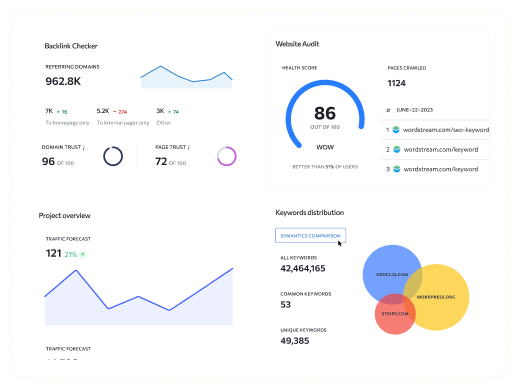In today’s competitive ecommerce landscape, data is the key to sustainable business growth. Understanding product performance through metrics such as views, cart additions, and sales is crucial for optimizing your online store. Google Analytics 4 (GA4) provides advanced tracking capabilities that offer invaluable insights for ecommerce businesses.
This comprehensive guide will help you navigate the intricacies of GA4 ecommerce, from setup to advanced reporting. By the end of this article, you’ll be equipped with the knowledge to track, analyze, and improve your ecommerce performance using GA4. Whether you’re new to GA4 or looking to deepen your understanding, this guide covers all essential aspects to maximize your ecommerce success.
Understanding GA4 for Ecommerce
Google Analytics 4 (GA4) is the latest version of Google’s analytics platform, designed to provide a more comprehensive and user-centric approach to tracking and analyzing data across websites and mobile apps. Unlike its predecessor, Universal Analytics, GA4 focuses on individual users and their interactions, offering a more detailed view of the customer journey.
Key Features of GA4 for Ecommerce
- Event-based Tracking: Instead of focusing on sessions and pageviews, GA4 tracks specific user interactions, known as events. This shift allows for more granular data collection and analysis.
- Enhanced Measurement: Automatic tracking of common interactions like scrolls, outbound clicks, and video engagement. This feature simplifies the setup process and ensures that critical data is collected without additional configuration.
- Predictive Metrics: Machine learning models to predict future actions such as purchase probability and revenue estimation. These insights help businesses make informed decisions about marketing strategies and budget allocation.
- Cross-platform Tracking: Seamlessly track users across websites and mobile apps, providing a holistic view of user behavior and interactions.
GA4’s emphasis on user-centric data and its advanced analytical capabilities make it an indispensable tool for ecommerce businesses aiming to enhance their data-driven decision-making processes.
Essential GA4 Features for Ecommerce Businesses
New Predictive Insights for Ecommerce
GA4 leverages machine learning algorithms to predict user behavior, offering insights into purchase probability, churn probability, and revenue estimation. By analyzing past user interactions and transactions, GA4 can forecast future actions, enabling businesses to allocate marketing budgets more effectively and customize campaigns for maximum profitability.
Custom Funnels for Ecommerce Journeys
Custom funnels in GA4 allow you to track specific user journeys and identify where users drop off. This insight is crucial for optimizing each step of the purchasing process. For example, if you notice a high drop-off rate during the checkout process, you can implement changes such as simplifying the checkout steps, reducing form fields, or offering guest checkout options to enhance user experience and increase conversions.
Merchant Center Integration
Integrating your Merchant Center account with GA4 allows you to send conversion data directly and access enhanced reporting benefits. This integration enables you to compare organic shopping traffic with paid campaigns and other traffic sources, providing a comprehensive understanding of where your best customers are coming from and which marketing efforts yield the highest returns.
Revenue App Blended with Website Revenue
GA4 enables you to track in-app purchases alongside website sales within the Monetization section. This feature provides a holistic view of revenue from all digital platforms, helping you understand the overall performance of your ecommerce business across different channels.
More Custom Dimensions and Metrics
GA4 offers extensive customization options with dimensions and metrics tailored to your business needs. For example, you can track unique data points such as the number of logins from specific devices, the depth of scroll on product pages, or the number of users who read product reviews. These custom metrics allow you to gain deeper insights into user behavior and product performance.
Consent Mode Upscales Revenue for Opted-out Users
To stay compliant with data protection regulations like GDPR, GA4 provides a Consent Mode that allows you to gather limited data on users who have not consented to tracking. This mode uses machine learning to predict user behavior based on limited information, helping you understand potential user actions and improve revenue estimates without compromising compliance.
Combining these features with data from a website technical audit and ecommerce SEO analysis can significantly enhance your ecommerce strategy and drive business growth.
Setting Up GA4 Ecommerce Tracking
Setting up GA4 for ecommerce tracking involves several steps to ensure accurate data collection and analysis. Here’s a detailed guide to help you get started:
Creating a GA4 Property
- Sign in to Google Analytics: Go to the Google Analytics website and sign in with your Google account.
- Create a Property: Click on the Admin icon in the lower-left corner of the screen. In the Property column, click “Create Property.”
- Set Up Your Property: Follow the prompts to enter your property details, such as property name, reporting time zone, and currency. Click “Next” to complete the setup.
Setting Up Data Streams
- Go to Data Streams: In the Admin panel, under the Property column, click on “Data Streams.”
- Create a New Data Stream: Select “Web” to create a new data stream for your website.
- Enter Website Details: Enter your website URL and a stream name. Click “Create Stream.”
Installing GA4 Tracking Code
- Copy the Measurement ID: After creating the data stream, you will receive a unique measurement ID.
- Add Tracking Code to Your Website: Copy the GA4 tracking code provided by Google and paste it into the header section of your website, replacing the placeholder with your measurement ID.
- Verify Installation: Use the GA4 DebugView to ensure that the tracking code is correctly installed and data is being collected.
Ecommerce Setup in GA4
To enable ecommerce tracking, you need to configure your data layer and implement event tracking for key actions. This includes setting up events for product views, add to cart actions, and purchases.
- Configure the Data Layer: Implement a data layer on your website to capture ecommerce interactions. The data layer is a JavaScript object that holds key ecommerce data.
- Set Up Event Tracking: Use Google Tag Manager (GTM) or gtag.js to configure event tracking for ecommerce actions. This involves creating tags and triggers for events such as product impressions, add to cart, and purchases.
By following these steps, you can set up GA4 ecommerce tracking to collect valuable data and gain insights into your ecommerce performance.
Event Tracking in GA4 Ecommerce
GA4 tracks user interactions through events, providing detailed insights into user behavior on your ecommerce site. Tracking the right events is crucial for understanding how users interact with your products and where they encounter obstacles in the purchase process.
Key Ecommerce GA4 Events:
- add_to_cart: Tracks when a user adds a product to their shopping cart. This event helps you understand which products are attracting user interest and leading to purchase intentions.
- purchase: Records completed transactions. This is a fundamental event for tracking sales performance and revenue generation.
- refund: Logs when a user requests a refund. Monitoring refunds helps you identify issues with product quality or customer satisfaction.
- remove_from_cart: Tracks when a product is removed from the cart. Analyzing this event can reveal potential issues with pricing, product information, or user experience.
- select_item: Tracks when a user selects a product for more details. This event provides insights into which products are catching users’ attention.
- select_promotion: Logs interactions with promotional offers. This helps you measure the effectiveness of your marketing campaigns and promotions.
- view_cart: Tracks views of the shopping cart. This event indicates users’ intent to proceed with their purchase.
- view_item: Logs individual product page views. This helps you understand which products are getting the most attention from users.
- view_item_list: Tracks views of product lists. This event shows how users are navigating through your product catalog.
- view_promotion: Logs views of promotional banners or offers. This helps you measure the visibility and appeal of your promotions.
Enhanced Event Measurement
GA4 offers enhanced event measurement, which automatically tracks interactions such as scrolls, outbound clicks, and video engagement. To enable this feature, go to the data stream settings in GA4 and toggle on the enhanced measurement options. This simplifies the tracking process and ensures that important user interactions are captured without additional configuration.
GA4 Ecommerce Tracking: Additional Configuration
To get the most out of GA4 ecommerce tracking, consider implementing additional configuration features. These configurations help improve data accuracy and tailor the tracking to your business needs.
Cross-Domain Tracking
- For businesses operating across multiple domains, setting up cross-domain tracking ensures accurate data collection as users move between sites. Without this setup, you risk losing data on the original traffic source when users navigate to a different domain.
Steps to Set Up Cross-Domain Tracking:
- Navigate to Data Streams: In the GA4 Admin panel, go to Data Streams and select your web data stream.
- Configure Tag Settings: Under the Google tag section, click “Configure Tag Settings.”
- Add Domains: Select the option to configure your domains. Add the domains you want to include in cross-domain tracking. Ensure all domains use the same Google tag.
Define and Filter Out Internal IPs
Exclude internal traffic from your analytics to ensure data accuracy. Internal traffic from you and your employees can skew data, making it difficult to understand actual user behavior.
Steps to Filter Out Internal Traffic:
- Define Internal Traffic: In the GA4 Admin panel, go to Data Streams and select your web data stream. Click “Define Internal Traffic” and create rules for your internal IP addresses.
- Create Data Filter: Navigate to Data Filters in the Admin panel. Create a filter to exclude internal traffic based on the rules you defined.
List Unwanted Referrals
Exclude unwanted referral traffic, such as third-party payment processors, to avoid skewed data. Unwanted referrals can misrepresent where your traffic is coming from, leading to inaccurate insights.
Steps to Exclude Unwanted Referrals:
- Configure Tag Settings: In the GA4 Admin panel, go to Data Streams and select your web data stream. Click “List Unwanted Referrals.”
- Add Domains: Add the domains you want to exclude as referrals. You can specify up to 50 unwanted referrals per data stream.
Configure Session Timeout
Adjust the default session timeout (30 minutes) to better reflect the average time users spend on your site. This can be useful for ecommerce sites where users may take longer to browse and complete transactions.
Steps to Adjust Session Timeout:
- Navigate to Data Streams: In the GA4 Admin panel, go to Data Streams and select your web data stream.
- Configure Tag Settings: Click “Adjust Session Timeout” and set the desired session duration.
Advertising, Events & Google Ads
Conversion Paths
Understand the steps users take before converting with the Conversion Path report. This report provides insights into the most effective marketing channels and conversion paths, helping you optimize your marketing efforts across different channels.
Steps to Use Conversion Path Report:
- Navigate to Conversion Paths: In the GA4 Admin panel, go to Advertising > Attribution > Conversion Paths.
- Select Dimensions: Choose the dimensions you want to report on, such as Source, Medium, or Campaign.
- Interpret Data: Analyze the data to understand which channels and touchpoints contribute most to conversions.
Create & Modify Events
Set up new events based on specific conditions and modify existing events to better track user interactions. Creating and modifying events allows you to tailor GA4 to your specific business needs and gain more relevant insights.
Steps to Create a New Event:
- Go to Events: In the GA4 Admin panel, navigate to Data Display > Events.
- Create Event: Click “Create Event” and enter the event name and conditions.
- Save Event: Save the new event and configure any additional parameters as needed.
Steps to Modify an Existing Event:
- Go to Events: In the GA4 Admin panel, navigate to Data Display > Events.
- Modify Event: Click “Modify Event” and enter the conditions for the modification.
- Save Changes: Save the modifications and update the event parameters.
Common Challenges and Solutions
Limited Historical Transaction Import
GA4 does not support importing historical transaction data, which can be a limitation for businesses transitioning from Universal Analytics. However, you can focus on collecting new data and updating existing transactions to ensure continuity.
- Solution: Use historical data from Universal Analytics as a reference while prioritizing the collection of new, actionable data in GA4.
Lack of GA4 Enhanced Ecommerce Reports
GA4 does not offer built-in Enhanced Ecommerce reports, but you can create custom events and configurations to track detailed ecommerce metrics.
- Solution: Set up custom events for key ecommerce actions and use the Explore section to create detailed, tailored reports.
Limited Ecommerce Reporting Options
GA4’s standard reports may not cover all ecommerce reporting needs. However, custom dimensions and metrics can be used to create the detailed reports you need.
- Solution: Utilize custom dimensions and metrics to track specific ecommerce data points and create reports that provide the insights necessary for optimizing your business.
By addressing these common challenges, you can effectively leverage GA4 to gain comprehensive insights into your ecommerce performance.
Conclusion
Mastering GA4 ecommerce is essential for any online business aiming to optimize performance and boost sales. By leveraging GA4’s advanced tracking and reporting features, you can gain invaluable insights into customer behavior and make data-driven decisions to enhance your ecommerce strategy. Start implementing GA4 today to unlock the full potential of your ecommerce data and drive business growth.
GA4 provides a robust framework for tracking and analyzing user interactions, offering detailed insights that can inform your marketing strategies, product development, and overall business operations. Whether you’re optimizing your checkout process, analyzing user journeys, or refining your marketing campaigns, GA4’s comprehensive features and reports are designed to help you succeed in the competitive ecommerce landscape.
Note: Read Our Latest Marketing and SEO Blogs:
What is Wix 404 Page | Upload a Robots.txt File to Wix | How to use wix | Launch your online community | Grocliq vs. The Rest | Guide to Mastering SEO | Can AI Content Help You Rank Higher.
Frequently Asked Questions
Q1. Which marketing channels account for the highest percentage of overall revenue?
A1: Navigate to Reports > Acquisition > Traffic Acquisition to see which channels drive the most revenue. This report helps you understand the effectiveness of different marketing efforts and allocate your budget accordingly.
Q2. Which marketing campaigns have the highest ROI in terms of revenue generated?
A2: Go to Reports > Acquisition > Traffic Acquisition and change the dimension to Session Campaign. This allows you to compare the performance of different campaigns and identify those with the highest return on investment.
Q3. Which webpages contribute the most to revenue generation?
A3: Visit Engagement > Pages and Screens and change the dimension to Page Path. This report shows which pages drive the most revenue, helping you optimize high-performing pages and improve those that are underperforming.
Q4. How do you find the source of traffic and transactions?
A4: Use the Explore section and select the Ecommerce template to configure your desired settings. This enables you to track the origin of traffic and transactions, providing insights into the most effective traffic sources.
Q5. How do you identify the abandonment rate at each step of the funnel?
A5: Navigate to the Explore section and select the Funnel Exploration template. This report shows the abandonment rate at each step of the funnel, helping you identify and address points of friction in the user journey.





